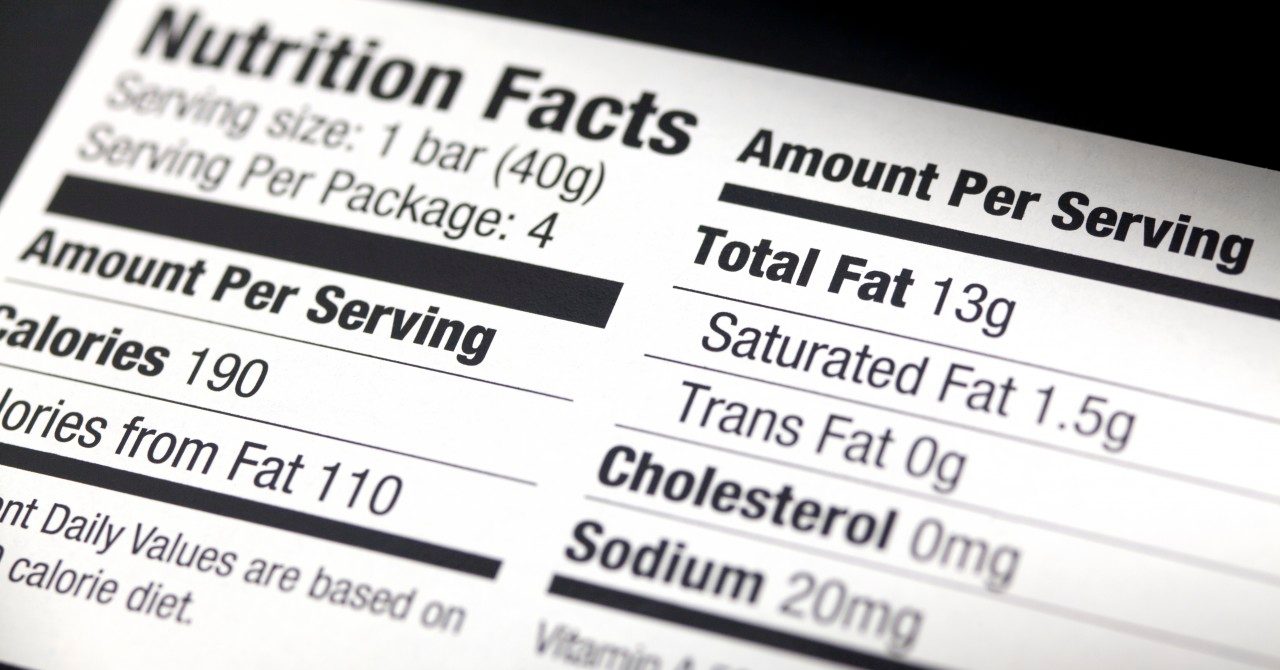How to Understand Those Confusing Nutrition Labels

Nutrition Facts labels can be confusing. First, know the difference between the marketing on the front of the package and the coded facts on the back.
You don’t need a degree in nutrition to understand nutrition claims and labels, but you do need an education in how to read them and what they actually mean.
Surveys from the Food and Drug Administration (FDA) and the American Heart Association with a food industry group suggest that Americans do use nutrition labels.
The new Nutrition Facts label
Food manufacturers put in place new Nutrition Facts labels in 2020 and 2021, after the FDA updated its requirements.
Consumers report that they use the labels to compare different products, particularly for calories, salt, vitamins, or fat.
Evaluating food nutritionally before you buy is a great start, but some advice is in order. As Bonnie Taub-Dix, a registered dietitian who runs a nutrition consulting company, writes in her book, “Read It Before You Eat It,” it’s important to recognize there are no “miracle foods that can provide everything (you) need in one little package. That’s like expecting one instrument to play the sounds of an entire symphony.”
Next, recognize that often “the front of the package doesn’t match the back.”
“There are buzzwords used to entice people to buy food that could be misleading,” she says. “Some words just aren’t regulated, like the word ‘natural.’ That may be the most common word on food labels, but it’s not clearly defined. To most consumers, it means the food is wholesome and healthy.”
But, she adds, “sugar is natural, salt is natural. Not everything that’s natural means healthy.”
Foods do have to adhere to certain standards to be labeled organic, but that doesn’t mean they are low in sugar or salt.
Other confusing marketing-language claims include:
- “Sugar free” (the product may still contain sugar)
- “Made with real fruit” or “fruit-flavored” (it may not contain any fruit)
- “Gluten free” (it may contain small amounts of gluten)
- “Light” (there are no standards for what this means)
- “Low-carb” (again, there are no standards)
- “Made with whole grains” (there are no standards)
- “Local” or "locally grown" (again, there are no standards)
“One product may be low in fat, but high in sugar, while another may be just the opposite,” says Peter Helfer, lead author of a 2014 study that compared four different labeling systems and found the current Nutrition Facts the least usable.
How to read confusing nutrition labels
On the back of the product, you’ll find more useful information. What are the first few ingredients? That’s mostly what you’ll be getting. If sugar is first, it doesn’t matter if the product is organic or gluten free, it’s still not a nutritious choice. Sugar goes by many names in processed food, including fruit juice concentrate and agave nectar, which sound healthier. Agave nectar doesn’t spike blood sugar levels as much as other sugars — but it is still a sweetener.
Taub-Dix recommends focusing on what’ most important to you.
If you are trying to lose weight, for example, pay particular attention to calories and where the calories are coming from. Look for nutrients you want to get more of and less of the ones you want to limit. If you’re concerned about blood pressure, check out the salt content. If you are prediabetic or have diabetes, avoid sugars. Always look at serving size to figure out the full package values.
To get around confusing nutritional facts and the vague claims that are manipulated to make foods seem healthier, opt for unprocessed foods. Most Americans need to eat more beans and legumes, real fruits and vegetables, and oats and other whole grains.
To help you avoid foods that have ingredients at levels you don’t want, make a very specific list before you go grocery shopping, Taub-Dix suggests. That also helps you save a lot of time by going right to foods you do want based on having read their labels previously.
Whatever else you do, don’t go to the store hungry. Taub-Dix confirms the age-old belief that the hungrier you are, the more you’ll buy. Those purchases will likely be impulsive, with far less regard for their ingredients or their healthiness.
While you may be better informed about nutrition and healthy food choices than ever before, you may feel bombarded with data that’s hard to understand. Try to keep it simple, taking one bite at a time. Don’t fall for claims that seem too good to be true.
Updated:
June 27, 2022
Reviewed By:
Janet O’Dell, RN